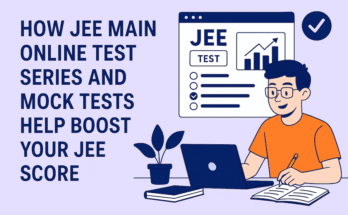In today’s digital world, educators, policymakers, and researchers have all suggested that education can be innovated by the modern technology we have access to. Modern technology has a real potential to transform education as we know it today and it has already started to bring some changes in the way educators teach and the way students learn.
According to 2015 data from the National Center for Education Statistics, about 88% of US students claimed that they had a computer and internet access which they used for schoolwork. Students use all types of technological devices including laptops, smartphones, tablets, and computers to complete their schoolwork.
Moreover, according to a report by Smoothwall, a spectacular 96% of educators claimed that they believe that technology can have a positive impact on the learning process and student participation in class. Moreover, 49% of educators admitted that technology has helped them plan and give their lessons more efficiently.
So, there should be no doubt that technology has the power to revolutionize and innovate education. Read on to find out how exactly technology can transform education for the better:
Technology makes learning interesting
Today’s kids learn how to use the Internet and technological devices from very young ages. So, their learning process using technology starts very early in their childhood. Whether their parents allow them to watch educational movies or they are allowed to surf the Internet, they get in contact with a huge amount of information very early in their lives.
So, educators today have embraced technology in planning and giving their lessons to their students. Using technological devices, they can make the lessons more interesting and engaging which positively impacts how much students participate in class.
Teachers and professors can now use technological devices such as computers, projectors or tablets to make their lessons more interesting. For example, they can show students explanatory videos or movies which will help the students understand and assimilate the information they receive much faster.

It provides more efficient teaching methods
As mentioned before, educators can use technology to give their lessons to students. And, one revolutionary thing that technology allows them to do is to use visuals more than ever before. According to medical studies, the human brain can understand and process information a lot faster when it is seen in the form of visuals compared with written text. So, for example, displaying a video to students in literature classes can be a thousand times more efficient than asking students to read from textbooks.
Also, teachers can use technology for creative activities or educational games. Educators and teachers have access to information at all times which can be useful to engage the students in the lesson. For example, when the lessons arise questions around students, teachers can ask them to look on the internet for the information. This way, the students will be engaged in the lesson and the chances for them to keep the information in their minds are much bigger.
Worldwide collaboration
In today’s globalized world, instant communication is paramount in every aspect of our lives and in every sector of our world. And, education is no exception to this rule. In fact, the faster and more efficiently educators communicate with their students, the better the learning process.
Thus, one of the main benefits of educational technology, or technology in general, is the fact that it allows worldwide collaboration between educators and students, specialists from the educational system, and between students. Nowadays, it is a popular trend for students and their professors to have social media groups where they communicate. While teachers can share their learning materials with their students, the students can easily communicate any doubt or question they might have regarding their schoolwork.
Also, thanks to the Internet and technological devices, we are now experiencing the rising trend of digital learning. Today, no matter what you want to learn about, be it literature, history, chemistry, or foreign languages, you can take online classes with experts in that certain field of study. So, modern technology has the power to facilitate communication between students and professors and provides a multitude of benefits through digital learning.
Develops technology-based skills
According to research conducted by the World Economic Forum, about 65% of today’s primary school-age students will enter the job marketplace in jobs that don’t even exist today. And, specialists estimate that most of these jobs will be digitized ones. Moreover, 90% of companies around the world report to currently struggle with an IT shortage. Not to mention that 75% of educators and students both claim to experience a gap in their capability to meet the IT skills needed in the workforce.
So, it shouldn’t come as a surprise that education needs to adapt to the changes that our world is experiencing in order to prepare the students for a digitalized world.
Takes education to the developing areas of the world
Having access to education is one of the human rights that should apply to all individuals no matter their age, sex, race, or nationality. And, in an ideal and uniformized world in terms of resources, that could be possible. Unfortunately, there are many areas across the globe that lack a proper educational system.
According to data from the Global Partnership for Education, less than 5% of children who live in areas affected by conflict have access to pre-primary school. Moreover, it seems that girls are two and a half more likely to be kept out of school by their families if they live in areas affected by conflict.
After more than a decade of trying to improve the education systems in developing countries, technology has now brought new opportunities for experts to do this. Lack of financial resources is the primary reason why proper education lacks in such areas of the world. However, technology has the power to eliminate the need for brick-and-mortar schools and allows connectivity between educators and children from such areas through the internet connection.
Modern technology can transform education in a number of ways for the better. It helps to enhance the teaching and learning processes and allows students and their professors to collaborate more efficiently than ever before.




